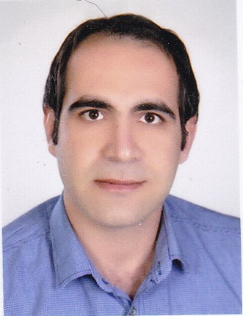
Water Science & Technology is proud to announce the winners of the 2nd Reviewer of the Year Award, celebrating the top reviewers of 2019.
This years winners were chosen by the Editor-in-Chief, Professor Wolfgang Rauch, with the help of the Water Science & Technology Core Team of Editors.
We continue to thank all reviewers who complete a review in the previous year, which is updated in January and can be found here, this award recognizes those who have made a real difference to the journal in the previous year.
The following prizes are awarded each year:
Reviewer of the Year, who will receive a book voucher worth $250, as well as an Open Access waiver code, which can be used when submitting a paper to Water Science & Technology
Three Super Reviewers, who will each receive an Open Access waiver code to be used when submitting a paper to Water Science & Technology
Eight Commended Reviewers, who each receive a commendation for their work on Water Science & Technology
For 2019, we are proud to announce the following beneficiaries of this award are:
Reviewer of the Year:
Dr Mohammad Najafzadeh, Graduate University of Advanced Technology-Kerman, Iran
Super Reviewers:
Dr Roshanida Rahman, Universiti Teknologi Malaysia, Malaysia
Professor Andreas Schmid, University of Applied Sciences, Germany
Dr Ming-Cheng Shih, I-Shou University, Taiwan
Commended Reviewers:
Professor Guilherme Dotto, Universidade Federal de Santa Maria-UFSM, Brazil
Dr Jan Bogacki, Warsaw University of Technology, Poland
Dr Catalina Maya, Universidad Nacional Autónoma de México, Mexico
Dr Michel Lafforgue, Suez Consulting, France
Dr Xiaotang Du, Praxair Inc, USA
Dr Arturo Burbano, Black & Veatch, USA
Dr Isabel Brás, Escola Superior de Tecnologia e Gestão de Viseu, Portugal
Mr Jordi Cros Herrero, ADASA Sistemas, SAU, Spain
Spotlight on the Reviewer of the Year
We asked Dr Najafzadeh to answer some questions about being a reviewer on Water Science & Technology:

Mohammad Najafzadeh received his B.S. Degree in Water Engineering from Shahid Chamran University of Ahwaz in 2006. Two years later, he finished his MEng Degree in Hydraulic Structures at Shahid Bahonar University of Kerman, where he graduated in Ph.D in 2013. His research interests include scouring in cohesive soils, environmental engineering, and artificial intelligence approaches. Over the last decade, he has published more than 45 papers in top journals. Last September 2019, Publons announced that he was selected as one of most prestigious reviewers in three various research fields: (i) Environment and Ecology, (ii) Engineering, and (iii) Cross-Fields.
Why did you choose to become a reviewer for Water Science & Technology?
The papers submitted to WST are generally within the scope of my research fields. In my view, I intend to peer review submissions focused on water quality, ground water, irrigation and drainage, artificial intelligence models, and numerical techniques (i.e., finite element, finite deference, finite volume).
How do you choose which papers you review for the journal?
The first part of paper to which I pay meticulous attention, is the title of paper. I am used to surfing the net for similar titles. For instance, I have seen a few submissions whose scientific materials (i.e., experiments, Figures, and Tables) have already been published. In this case, the paper needs to be declined. In fact, the title of paper can be of high interest for reviewers in persuading them to agree to review submissions. With a quick glance, it is possible to find out whether the paper will be interesting. Overall, the most useful piece of advice for authors is that they should afford to meticulously draw faultless schematic diagrams and illustrative figures. For my part, these items play a substantial role in in giving positive reviews.
What is your top tip when reviewing papers?
- A perfect paper should be reasonably organized. Almost all the papers I peer reviewed, suffer from various structural mistakes. The information below would be useful for authors/reviewers of Water Science and Technology:
- The abstract section should begin with a brief description on the relative importance of the subject. Next, the methodology needs to be briefly discussed and then qualitative and quantitative results should be presented succinctly.
- The introduction section should begin with a definition of the under lying problem. A rigorous literature review should be chronologically provided. Merits and demerits associated with previous methodologies need to be discussed. Afterwards, major emphasis and novelty should be expressed. Ultimately, the last paragraph is dedicated to the research organization.
- To obtain reasonable findings, authors are strongly recommended to apply statistical tests for analyzing the results of their research. Moreover, results and discussions can be enhanced by merging scatter plots which indicate variations of independent variables with dependent ones.
- The best conclusion sections should follow three steps. In the first step, authors need to present a brief description of their research as the first paragraph. The second stage is dedicated to the presentation of the main findings item-by-item. Eventually, authors are emphatically recommended to provide guidelines for further improvements/research works.
Congralutations to Dr Najafzadeh, our Three Super Reviewers and the Eight Commended Reviewers!
